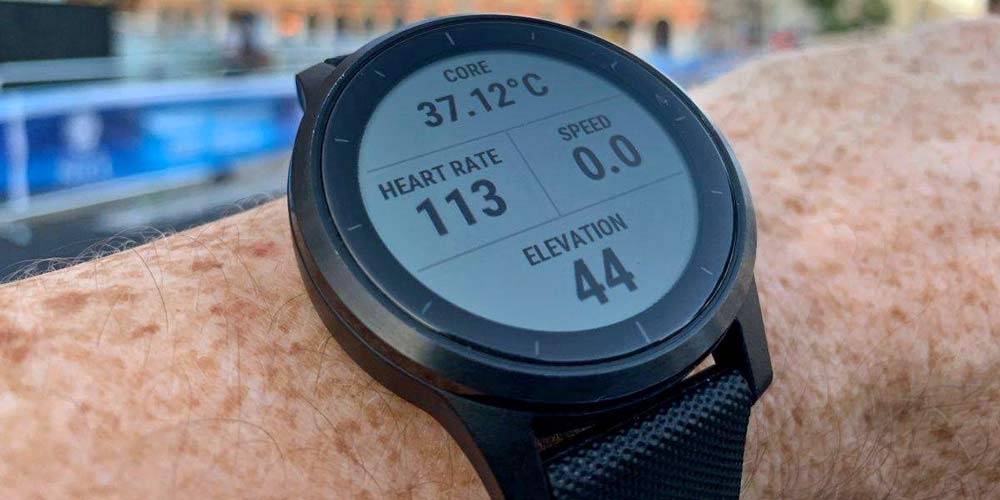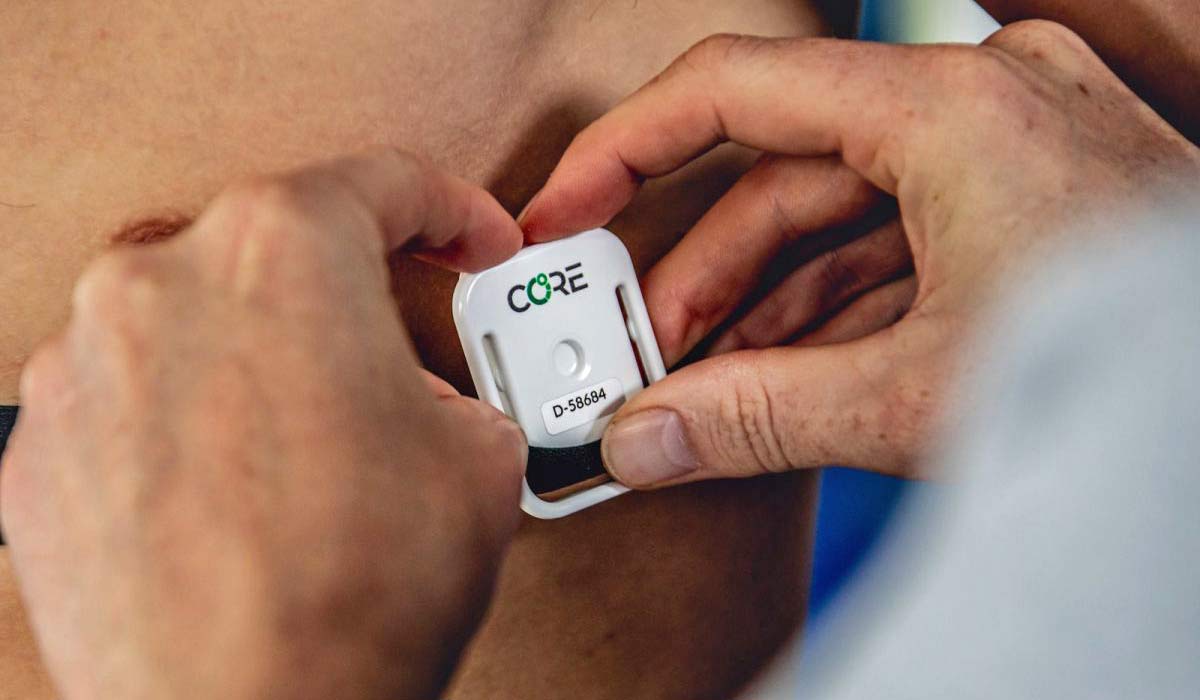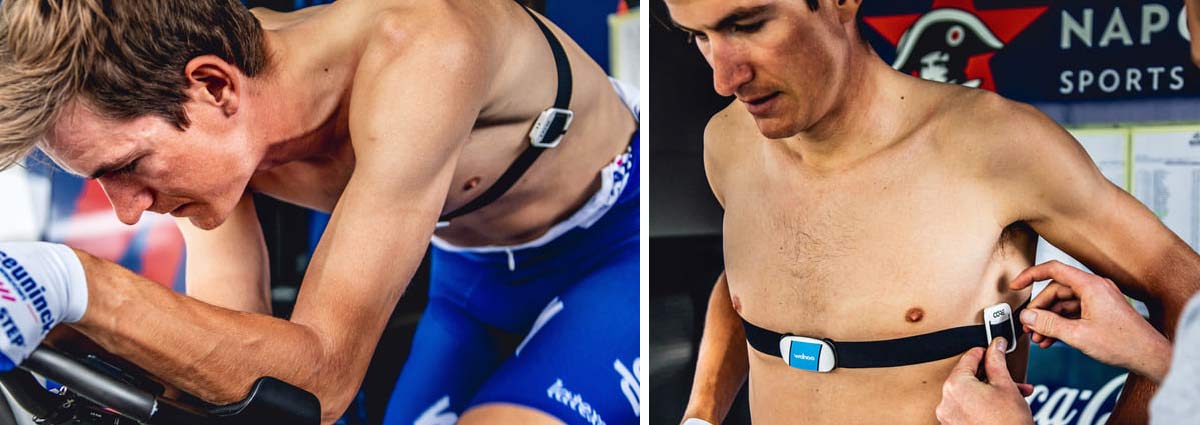Proven this summer racing the Tour & Giro, Swiss tech company CORE wants to help elite athletes better manage their training & race efforts by live-monitoring core body temperature. Previously limited to lab-only monitoring (and generally more invasive setups), Core’s unique new wearable body temperature tracker gives access to live-updated temp data to help athletes optimize their efforts and cooling measures during training & racing.
How can CORE body temperature monitoring improve performance?
The general basis for the rationale behind CORE body temperature tracking is that at a certain point, when your body cannot shed excess heat during intense efforts, your power output will decline.

That’s a pretty basic concept that anyone who has ridden in super hot weather will understand (even weather over 25°C/77°F starts to noticeably impact endurance athletes.) Yet, unless you wanted to insert an internal thermometer or swallow a temp-tracking pill, real body temperature tracking was out of reach for most athletes.
And while heat affects all of us differently, tracking the real impacts & correlation of temperature to other training metrics like heart rate & power output, can surely help cyclists figure out how to better deal with heat. That could mean optimizing training efforts (like introducing thermal stress to increases training load), better acclimating to riding in heat (say to prep for anticipated hot racing), or determining when best to employ additional cooling techniques (like riding with ice vests, or even choosing specific clothing.)

Core worked with a couple professional World Tour cycling teams this summer to verify their capabilities in race situations, with riders tracking body temps at the Tour de France & Giro d’Italia. Deceuninck–Quick-Step was most interested to track their riders’ body temperature during while racing to better gauge their efforts. After success at the Tour de France, now Bora-Hansgrohe will use CORE next season to help their riders “advance racing performance”.
Tech details – How does the CORE temp tracker work?
The little stick on Core sensor isn’t actually just a thermometer (as we/I might have guessed). Instead it is a tiny “energy transfer sensor” developed by Core’s parent company greenTEG, that measures the amount of energy being transferred from your body, out into the environment.
Essentially it is measuring the heat loss of your body, and extrapolating that to calculates your core body temperature – with claimed accuracy of +/-0.21°C comparable to real internal measurement (more detail on the tech here).
What Core does with that tech is pack it into a tiny 12g, 4x5cm by 8.35mm thick tracking device that can be either stuck directly to your skin or hung on the heart rate strap you are probably already wearing.
With a USB-rechargeable li-po battery, the IPX7 water-resistant sensor will transmit your core temp for 6 days on one charge – or 6 weeks in sleep mode. It communicates with both Bluetooth BLE & ANT+, and is directly compatible with a number of effort tracking apps on iOS, Android, WatchOS, Wear OS, Garmin ConnectIQ & Wahoo devices.
CORE Body Temperature tracking – Pricing & availability
In the end, the real innovation of the Core temp tracker is simply making it small, easy-to-use, and affordable enough that more athletes can have access to body temperature monitoring. Starting at $275 / 250 Swiss francs (~230€) for the Core tracker kit, real-time monitoring of body temperature isn’t going to be for everyone.

But as we’ve seen the explosion of power meters in the past few years among competitive amateur cyclists, this is likely another valuable data stream that athletes can use to optimize their training and race efforts.
The Core tracker is available consumer-direct for much of the world, or via TheFeed in the US.